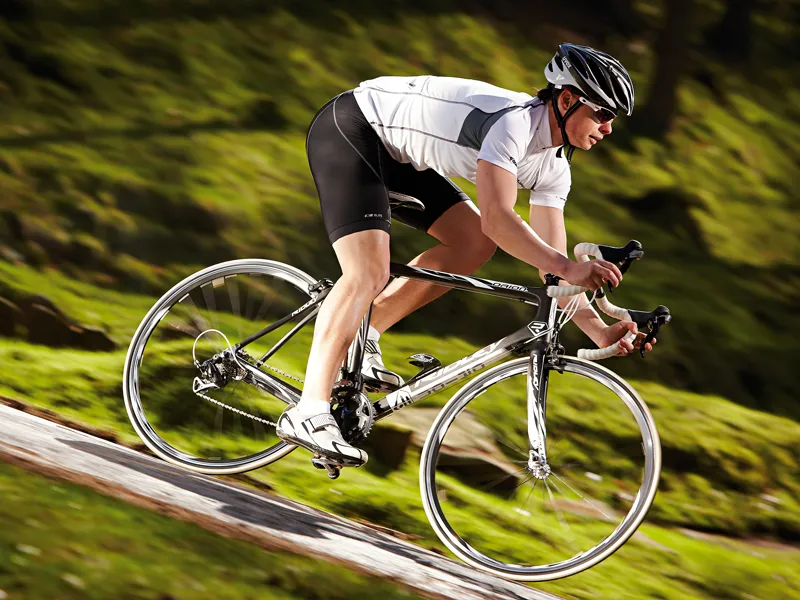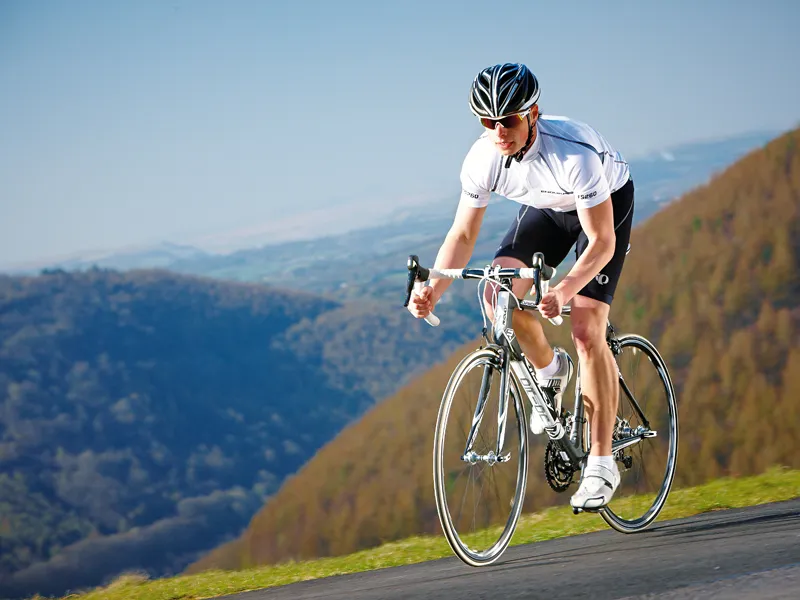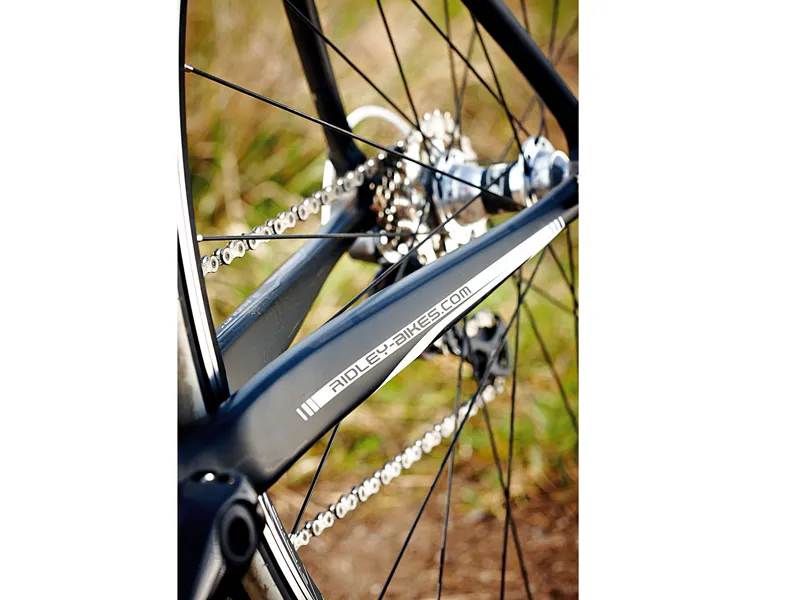Ridley has taken its base-level carbon Orion back to the drawing board and come up with a completely new frame and fork. Taking its cues on geometry from the range-topping Noah, the Orion has the same 72.5° and 73.5° seat and head angles, and our large (57cm) test bike has a long 58.5cm top-tube. This creates a longer position than on a typical sportive bike but isn’t as stretched as a full-on race machine.
According to Ridley the high-modulus carbon tubing is designed to hold the same characteristics whatever the frame size, and the company also claims that the design of the tubes forming the ‘cradle’ of the frame – the 2in diameter down-tube and huge 1.5in boxy chainstays – is ideal for transferring power. Their large diameters also mean the top-tube and seatstays can be much more minimal, adding comfort.
We really like the Orion’s position between full-on race and relaxed sportive upright comfort; it puts long, mile-eating rides well within reach, but when you want to get out of the saddle and go, or drop a descent as fast as possible, the Orion is both assured and exciting, the taut front end tracking superbly and not wandering off line. Combining this level of road buzz-reducing smoothness and great power transfer is quite an achievement – it’s the holy grail of modern carbon frames – and Ridley’s claims for its new design are borne out by our experience. The previous incarnation of the Orion had similar abilities but it always required muscling up to speed thanks to its heavier chassis, wheels and a rougher all-round ride. The 2011 model loses a couple of hundred grams from the bare frame and gains a lighter fork too, shaving close to half a kilo from its previous incarnation’s total weight.
The cockpit is an all-aluminium affair from in-house brand 4ZA. the Stratos bar has a close radius drop, a good mid-point between standard and compact that makes for a wind-cheating position without feeling overstretched. This, combined with the hexagonal shaped Stratos stem which is free of flex or twist even under hard sprinting, helps to create that super tight and positive front end. The 4ZA branded saddle has a fairly flat profile with narrow sides and a wider back. The hull itself has the ideal amount of flex, providing a comfortable place to sit even on longer rides.
The wheels, based around 4ZA rims and Cole hubs, are smooth running and tightly put together. They handled all the miles we put on them, including plenty of big hits on bad roads, yet remained true and trouble-free. They’re no lightweight hoops, though, hitting the scales at 3.28kg including tyres, cassette and skewers. that’s a significant part of the total 8.45kg. On the road the Orion doesn’t feel heavy though, riding like a bike a kilo or so lighter. We’d put that down to the great frameset, and once the 4ZAs have served their time we’d be happy investing in a wheel upgrade.
What sets the Orion apart from so many of its competitors at this price is the quality of the chassis and the positive ride. Yes, there have been some compromises in spec to get it under the £2000 mark, but the frame rises above those. The Orion used to be a bit of an also-ran but now it’s a true contender.




